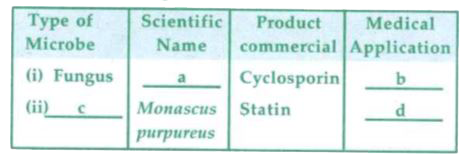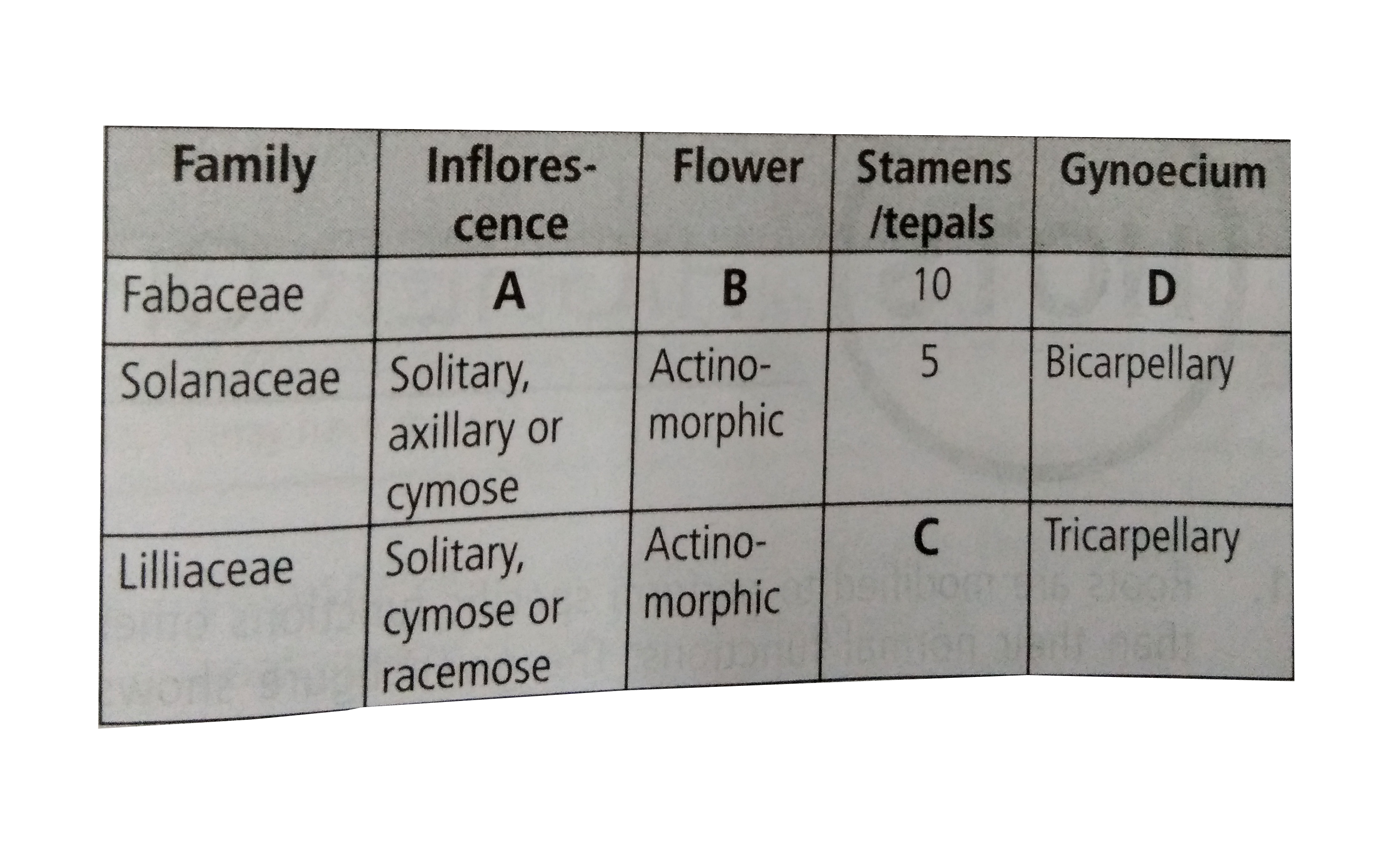Fill in the blanks A, B, C, and D with the correct choice of words.
In the glycolysis process, ATP is required in two steps. Firstly, in the conversion of ____________A__________________ to ________________________B______________________ and secondly in the conversion of _____________________C_______________________ to __________________D_______________________.
A-Glucose, B-Glucose-1,6-biphosphate, C-Fructose, D- Fructose-6-phosphate
A-Glucose, B-Glucose-6-biphosphate, C-Fructose, D- Fructose-6-phosphate
A-Glucose, B-Glucose-6-phosphate, C-Fructose-6-phosphate, D- Fructose-1, 6-biphosphate
A-Glucose, B-Glucose-6-biphosphate, C-Fructose-6 phosphate, D- Fructose-1, 6-biphosphate
The correct Answer is:C
To solve the question regarding the glycolysis process and the required ATP in two steps, we will fill in the blanks A, B, C, and D with the correct terms.
1. Understanding Glycolysis: Glycolysis is the metabolic pathway that converts glucose into pyruvate, generating small amounts of ATP and NADH. It occurs in the cytoplasm and consists of two phases: the preparatory phase and the payoff phase.
2. Identifying the Steps Involving ATP:
- In the preparatory phase, ATP is used in two key reactions:
- The first reaction involves the conversion of glucose to glucose 6-phosphate. This reaction is catalyzed by the enzyme hexokinase, and one ATP molecule is consumed in this process.
- The second reaction involves the conversion of fructose 6-phosphate to fructose 1,6-bisphosphate. This reaction is catalyzed by the enzyme phosphofructokinase, and another ATP molecule is consumed here.
3. Filling in the Blanks:
- A: glucose
- B: glucose 6-phosphate
- C: fructose 6-phosphate
- D: fructose 1,6-bisphosphate
Thus, the completed statement is:
"In the glycolysis process, ATP is required in two steps. Firstly, in the conversion of glucose (A) to glucose 6-phosphate (B) and secondly in the conversion of fructose 6-phosphate (C) to fructose 1,6-bisphosphate (D)."
- In the preparatory phase, ATP is used in two key reactions:
- The first reaction involves the conversion of glucose to glucose 6-phosphate. This reaction is catalyzed by the enzyme hexokinase, and one ATP molecule is consumed in this process.
- The second reaction involves the conversion of fructose 6-phosphate to fructose 1,6-bisphosphate. This reaction is catalyzed by the enzyme phosphofructokinase, and another ATP molecule is consumed here.
- A: glucose
- B: glucose 6-phosphate
- C: fructose 6-phosphate
- D: fructose 1,6-bisphosphate
"In the glycolysis process, ATP is required in two steps. Firstly, in the conversion of glucose (A) to glucose 6-phosphate (B) and secondly in the conversion of fructose 6-phosphate (C) to fructose 1,6-bisphosphate (D)."
Similar Questions
Knowledge Check
The flow chart given below shows the steps in glycolysis. Select the option that correctly fills in the missing steps A,B,C and D.
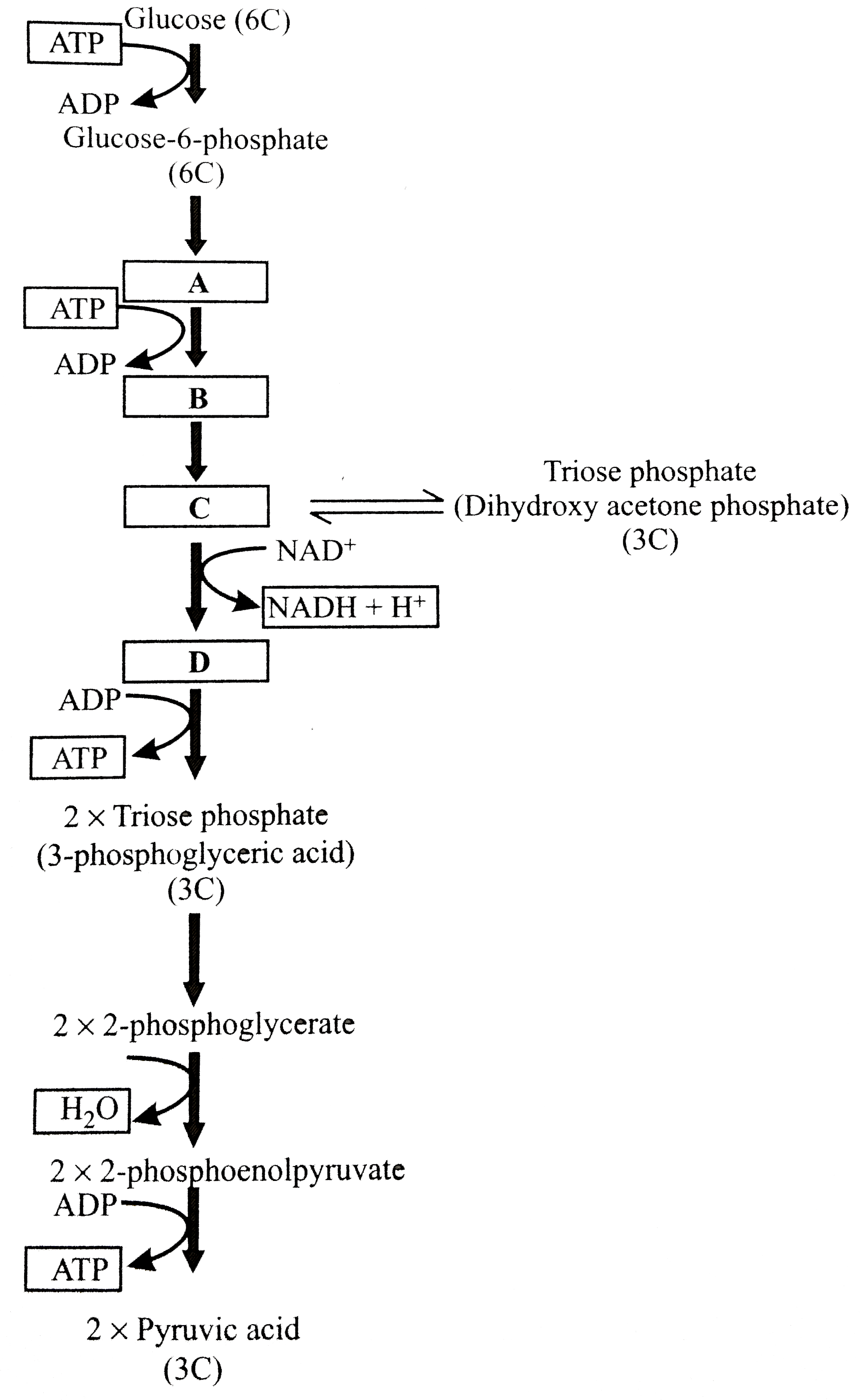 AABCDFructose-6-phosphateFructose-1-6-biphosphate3−PGAL1.3−biphospho-glyceric acidBABCDFructose-1,6-biphosphate3-PGAL1.3−biphospho-glyceric acidCABCD3-PGA1,3-biphospho-glyceric acid 3−PGALFructose-1 ,6-biphosphateDABCDFructose-1,6-biphosphateFructose-6-phosphate3−PGAL1,3-biphospho-glyceric acid
AABCDFructose-6-phosphateFructose-1-6-biphosphate3−PGAL1.3−biphospho-glyceric acidBABCDFructose-1,6-biphosphate3-PGAL1.3−biphospho-glyceric acidCABCD3-PGA1,3-biphospho-glyceric acid 3−PGALFructose-1 ,6-biphosphateDABCDFructose-1,6-biphosphateFructose-6-phosphate3−PGAL1,3-biphospho-glyceric acid
ATP as well as NADPH +H+ both are required during the conversion of _______ in C3 cycle
View SolutionFill in the blanks A, B, C and D with the correct choice of words.
Viruses are (A), protected by a protein coat called (B). The protein coat is made up of the assembly of small units called the (C ). It protects the internal (D)of the viruses.
View SolutionGive the name and formula of each A, B, C, D, E and F in the following conversion reactions :
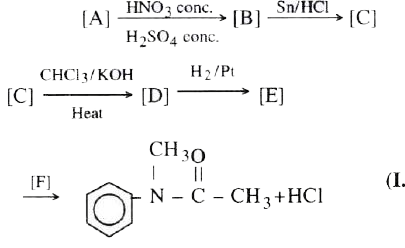
View Solution
The compound (C ) and the reaction involving the conversion of (B) to (C ) are:
View SolutionFor the process A+B→C+D,ΔG is positive. Comment on the spontaneity of the process.
View SolutionGive balanced equations for the following conversions -A,B,C,D&E.

View SolutionStudy the cycle shown below and select the option which gives correct words for all the four blanks A, B, C and D.
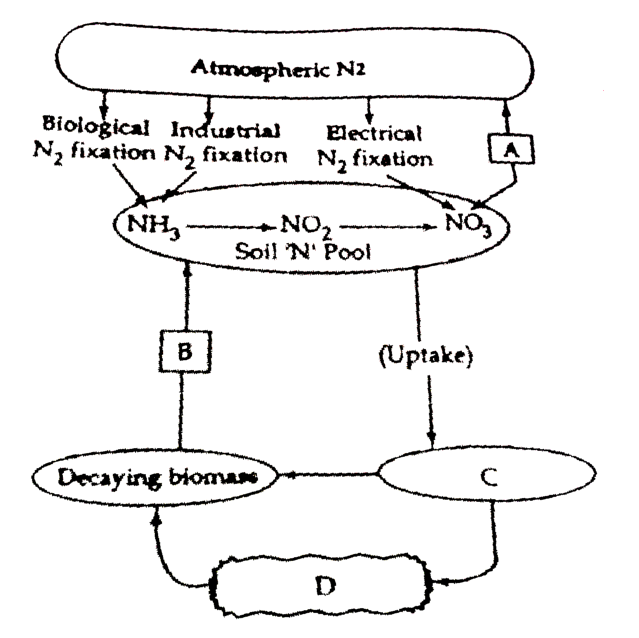
View Solution

